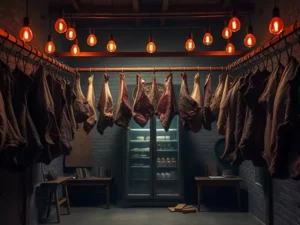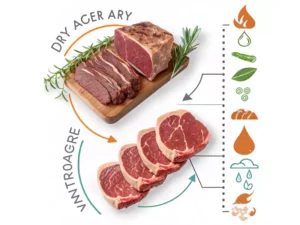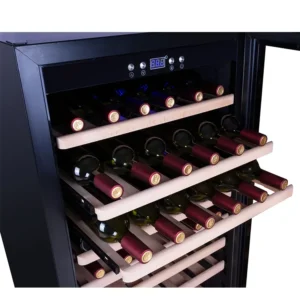Why dry-age meat? What is so appealing about dry-aged meats that they deserve so much attention?
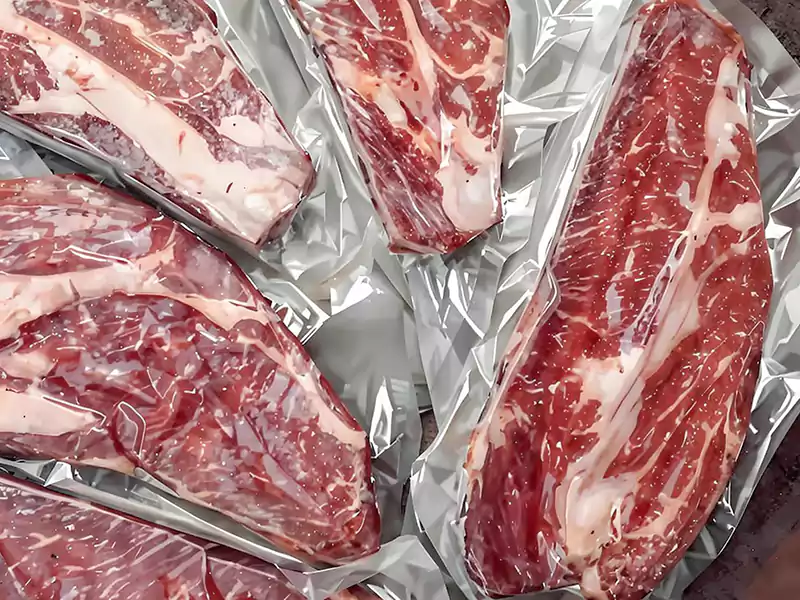
I. Flavor and Texture Upgrade
Dry-aged meat is a sophisticated meat treatment process designed to gradually achieve the desired state of doneness in an anhydrous environment by controlling temperature, humidity and time. Dry-aged meat involves moisture control, enzyme activity, and microbial action.
The process of slow maturation of meat under specific conditions through natural enzymatic and microbial action. During this process, the proteins in the meat are broken down into small molecular compounds such as amino acids, which give the cooked meat its rich and complex aroma. At the same time, fat and fat-like substances in the biofilm are converted into fatty acids with a nutty flavor, further enhancing the meat’s flavor profile. In addition to flavor enhancement, dry aging also significantly improves the texture of meat. During prolonged aging, the connective tissue in the meat is gradually softened, making the meat more tender and juicy.
This method is widely used in the field of ingredient cooking and brings a unique texture and flavor to meats.
II. Extending Shelf Life and Reducing Waste
The low-temperature environment of the dry aging process and the UV-enabled dry-aged fridge are key to inhibiting the growth of microorganisms. By controlling the temperature and humidity of the dry aging room and using UV light to effectively kill bacteria, viruses and other microorganisms inside the facility, the safety of the meat is effectively enhanced and the shelf life of the cooked meat is extended. In addition, as the water slowly evaporates, a hard skin forms on the surface of the meat, which not only protects the meat inside from outside contamination but also reduces the weight loss of the meat. This natural preservation method not only effectively reduces food waste, but also retains the original nutritional value and flavor of the meat.
III. Enhancing Nutritional and Economic Value
During the dry-aging process, the proteins in meat are gradually broken down into small molecules such as amino acids by the action of enzymes. These amino acids are not only natural flavorings but also enhance the nutritional value of the meat. As the cooking time progresses, the connective tissue in the meat softens and the muscle fibers become loose. This makes dry-aged meat easier to chew and digest after cooking, improving the utilization of its nutritional value.
Due to the complex, time-consuming and equipment-demanding nature of the dry-aging process, the availability of dry-aged meat on the market is relatively low. This scarcity gives dry-aged meat a high price premium in the market.
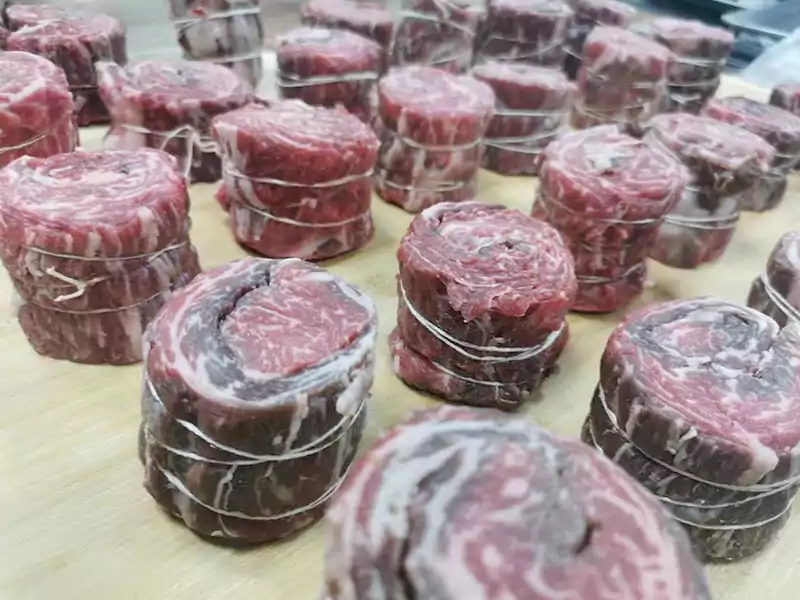
Which Type of Meat is More Suitable for Dry-aging?
Beef: Premium beef breeds such as Kobe Beef and Australian Wagyu Beef, which are inherently superior in meat quality, can be dry-aged to further enhance their flavor and texture. The even distribution of fat and the delicate texture of these meats allow for the production of richer flavor substances during the aging process.
Chicken and duck: Chicken and duck are also suitable for dry-aging. Dry aging softens the meat and tenderizes the chicken and duck while concentrating the flavors and reducing the fishy taste.
Steak: Steak is one of the most common meats dry-aged. Dry-aging steaks significantly improve their flavor and texture, making them more tender and juicy with a distinctive aroma. This treatment is especially suitable for those with low.
Fish: Fish can also be dry-aged, but care needs to be taken to select the right species and control the aging conditions. Some deep-sea fish such as tuna and salmon are more suitable for dry-aging. During the aging process, the proteins and fats in the fish will decompose and oxidize, producing special flavor substances that give the fish a richer, more complex flavor.
In short, the appeal of dry-aged meats has become a consumer favorite for its unique flavor, texture, preservation advantages, and enhanced nutritional and economic value. It is not only the result of technology but also the result of people’s culinary exploration.




